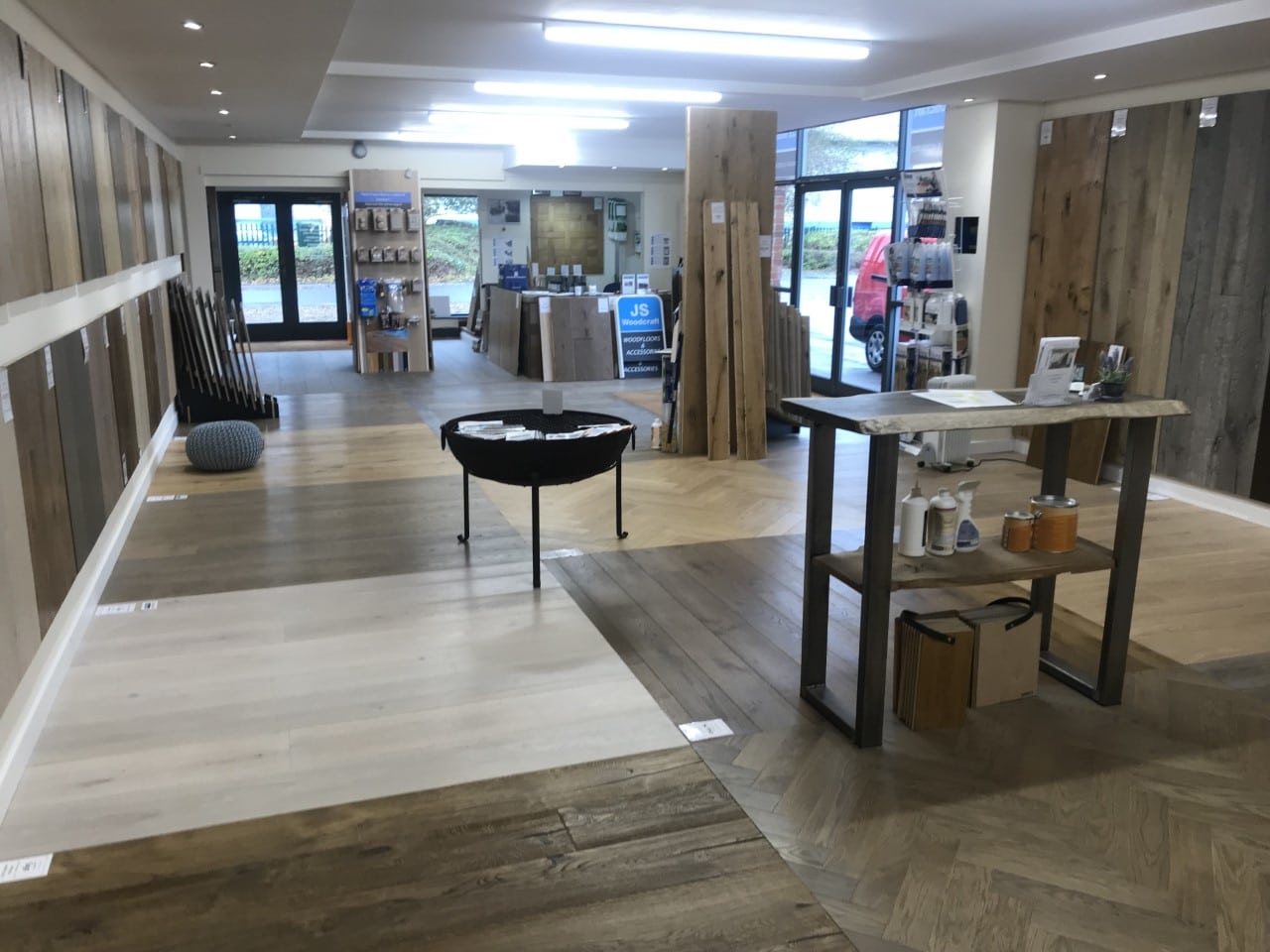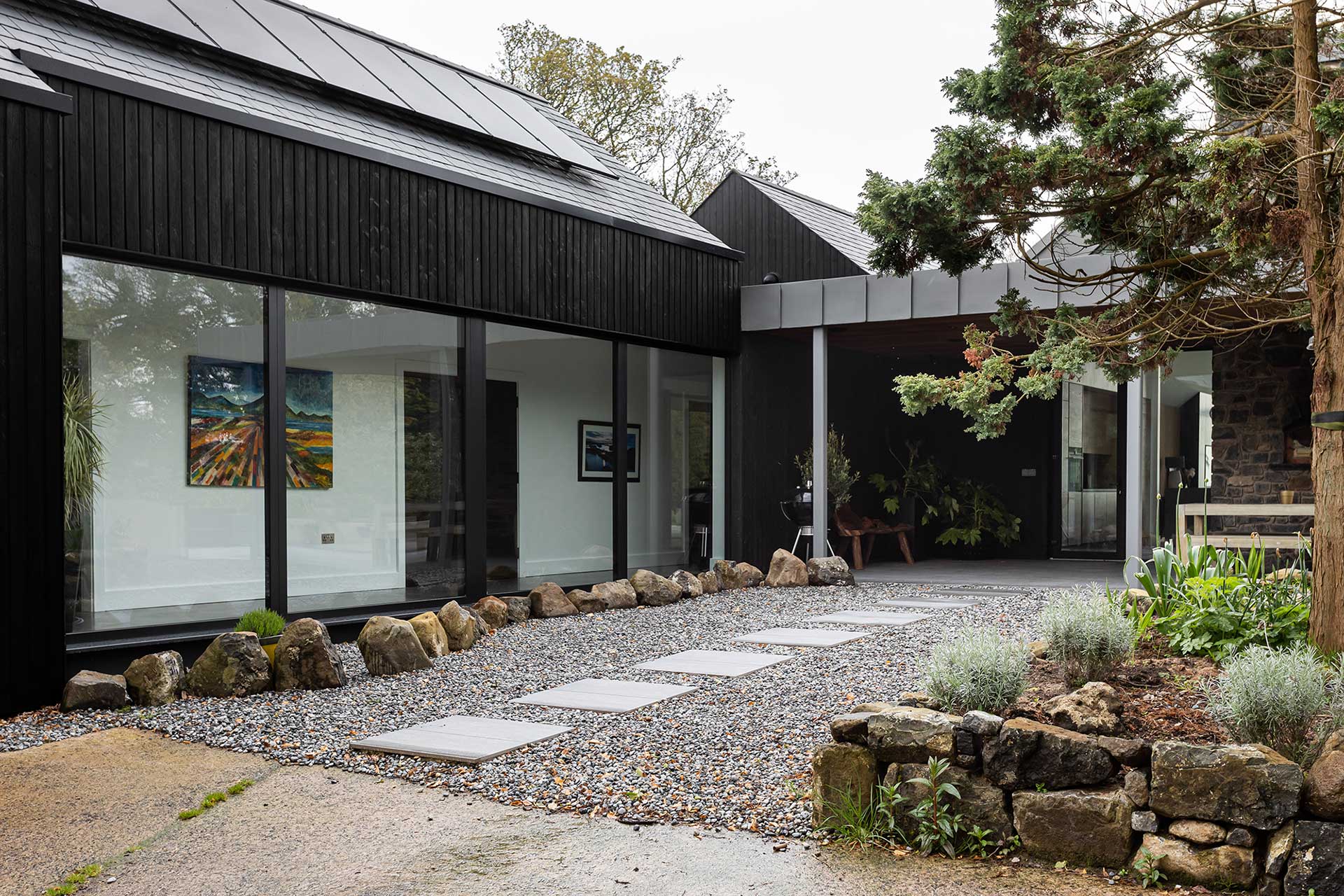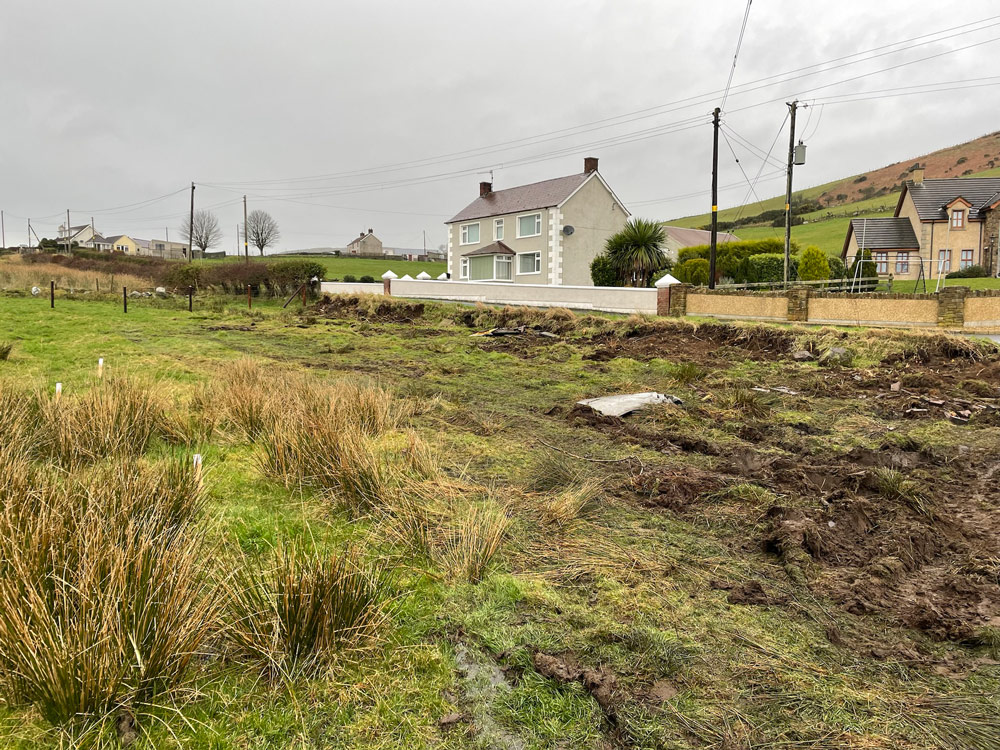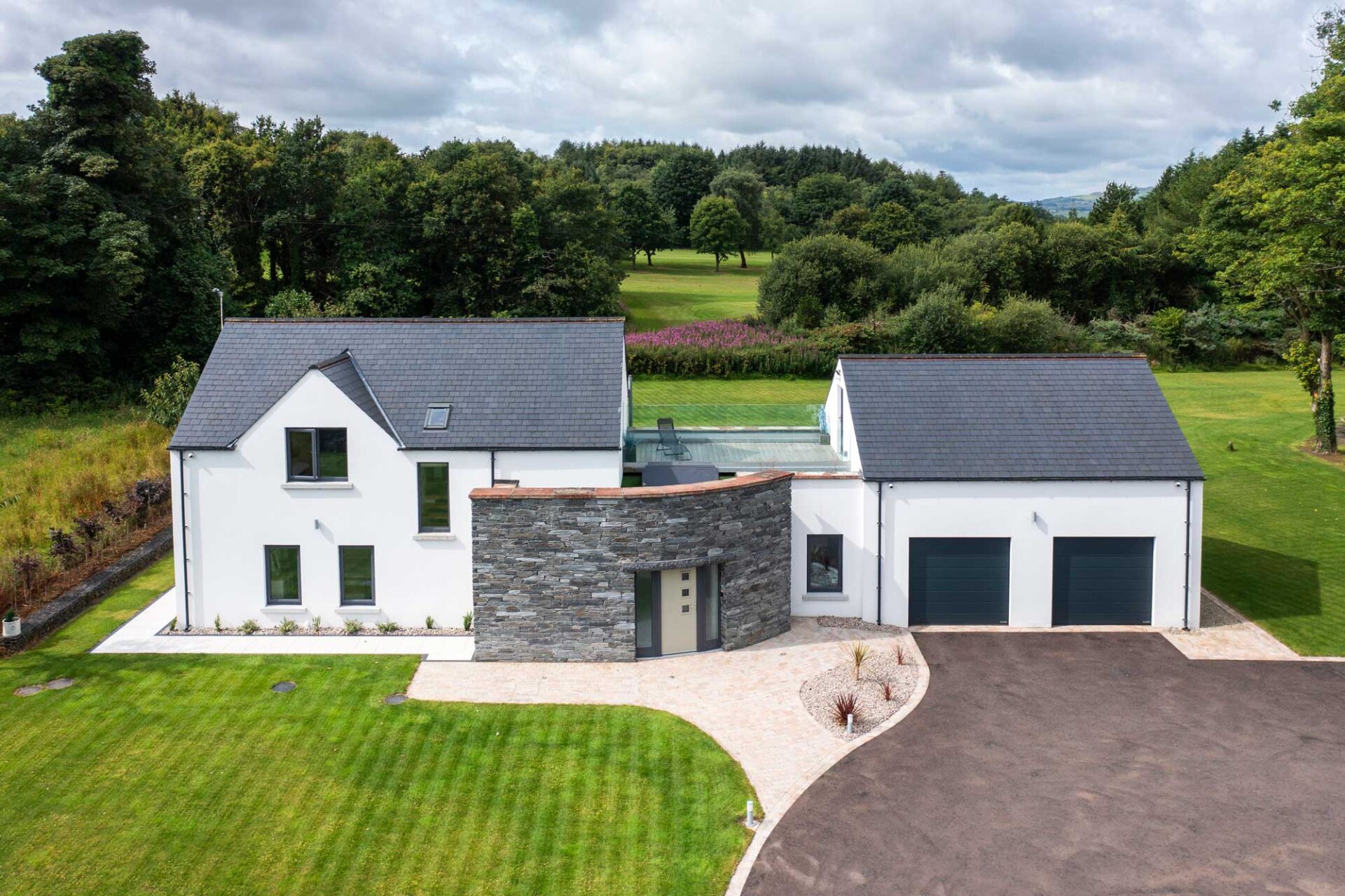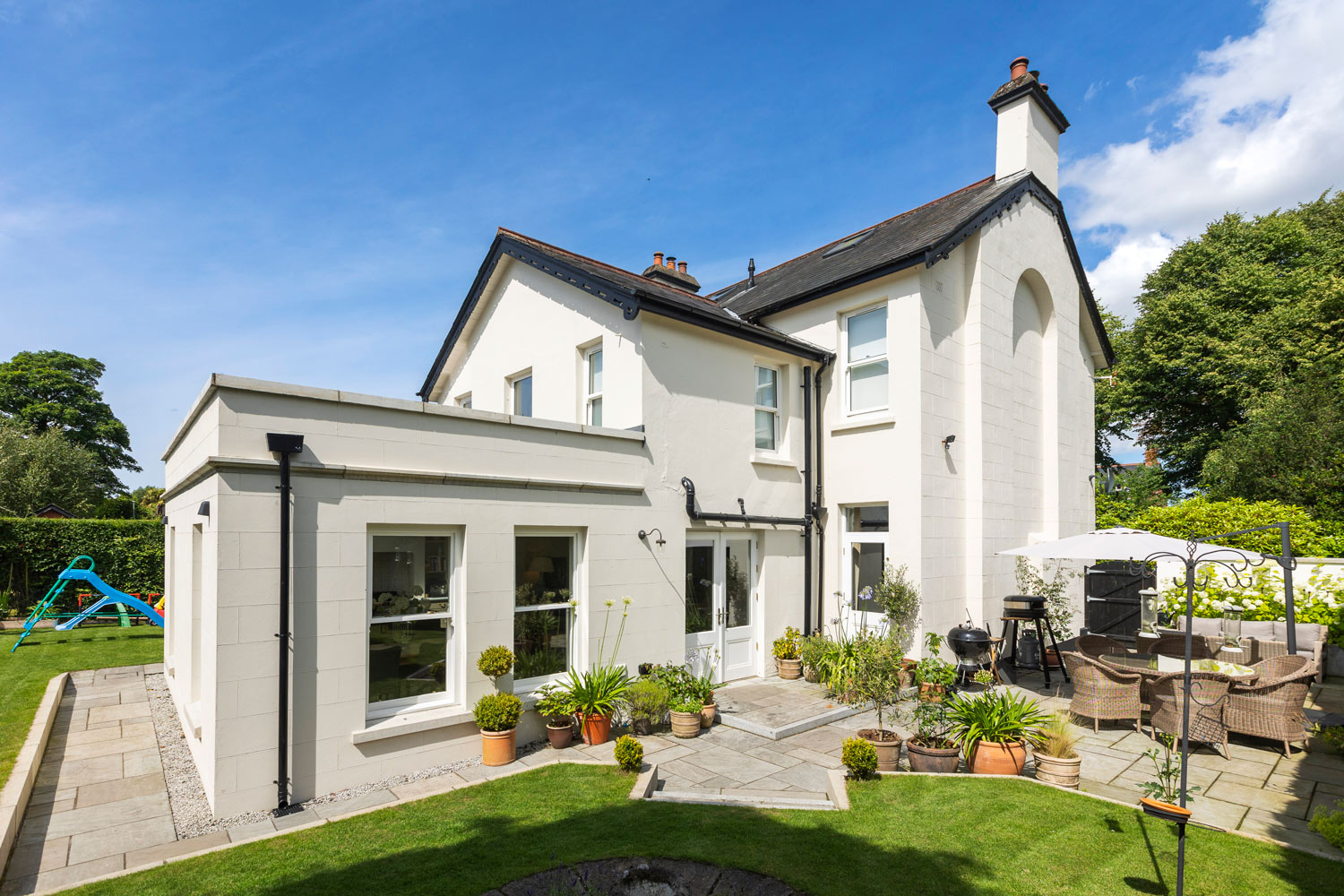Cork is neither as hard as tiles nor as soft as carpet or cushioned vinyl, so for many people is an ideal combination. Relatively hard wearing, warm to the eye and underfoot, especially good with underfloor heating, often comes in tile form which makes them easily replaceable; the material is also inexpensive. Good for bathrooms and kitchens and for people susceptible to allergens, especially dust. Seal well to prevent dirt penetrating the cork, a process you may have to repeat every few years depending upon wear. Some are coated with PVC but these are more expensive and may emit VOCs.
Engineered wood, or ‘semisolid’ flooring, consist of a sandwich of two layers of timber with a ‘filling’ of softwood. It is similar in price to solid wood, although less prone to movement and warping. Pre-finished flooring doesn’t need sanding or sealing but an extra coat of seal will provide protection in busy areas.
Laminate consists of an overlay, image layer, core board, moisture barrier and sound reduction underlay. Ideal for use anywhere in the house, laminated wood must be very well sealed to prevent de-lamination from the base layer if used in a bathroom. Parquet/wood block flooring consists of individual solid blocks of wood glued to the sub-floor to create a pattern.
Quality, standards and certification schemes
The means by which wood flooring is nowadays classified is not by species or origin, it is by colour: all dark, medium or light. Rich dark tones come from walnut, wenge, and ipe. Deep wine red colours can occur naturally from cherry, mahogany and rosewood. Light blond colours come from maple, ash and birch. Each species used for flooring has its own inherent strength and resistance to wear, and the most widely used measure is called the Janka scale of hardness, the higher the number, the harder the wood. At the top you generally have the South American species such as ipe and mahogany, in the middle most of the North American species such as maple and red oak with all of the other oaks also in the middle. At the bottom of the hardwoods are generally walnut and cherry before the softwoods such as pine start to be listed. Right at the bottom is Balsa wood, often used to build models but not floors!
The Chinese influx of wood products onto the market has led to the introduction of a simple grading system of ABCD, ‘A’ being clear of knots and ‘D’ having some tidy looking knots, pushing aside the old Rustic, Country and Select grading system. Also, engineered and laminated flooring will emit VOCs as they are glued together with resins and their components are likely to have gone through a chemical-laden manufacturing process.
With regards to preventing illegal logging and the mismanagement of forests, know that bamboo may not necessarily be forested sustainably, i.e. some forest land is burned to make space for plantations, so request the Material Safety Data Sheet (MSDS), technical data sheets and farming policy from the manufacturer when in doubt. Then there’s the Forest Stewardship Council, better known as FSC, and the Programme for the Endorsement of Forest Certification, better known as PEFC, certification schemes which look at the whole process, from felling through to planting. Both certification companies also verify the systems of the wood trader, the producer and the seller to make sure that the certified wood gets to market without being mixed with potentially illegally logged wood. This is known as the Certification of Chain of Custody, each company in the chain has to demonstrate processes where traceability of the original source can be maintained.
Some in the timber industry also use sources from North America which come from federal or private forests. Most, around 90% of the Canadian Boreal Forests for example are still owned by the British Crown Estate and managed by the Canadian Government. As a result, each tree goes through an assessment process before cutting; this includes the effect on the land, local wildlife and first nation people. After felling, trees are planted in accordance with the local species and land conditions. In this way the integrity of the forests are maintained.
Practicalities
Solid wood will last the longest, then engineered, then laminated, and the latter two are more than likely to emit VOCs. In practical terms it’s important to know that wood is hygroscopic, i.e. it takes on and releases moisture from the atmosphere and any other local source too (for example leaking pipes), meaning that the floor boards shrink as the atmosphere gets drier or less humid, and expand as the atmosphere gets wetter or more humid. This expansion and contraction is a natural cycle of the wood floor and will never stop. You can only hinder the process by not giving the wood enough space to expand in which case any expansion will lead to defects in the floor, or by laying the product when it is too wet and watching the gaps appear in the floor as it dries down. Thus it is very important to let wood to acclimatise before you lay it, and to allow for expansion around the edges and perhaps the centre of the floor. Engineered wood flooring cuts out a good deal of this movement, but not entirely, so it remains good practice to allow this type of flooring space to move. Underfloor heating can provide a remedy to wood flooring moisture. (The rule of thumb has become to use engineered with underfloor heating – this is despite the fact that there are hundreds of installations in the market using solid flooring without any problems. It remains a point for debate in the marketplace.)
Whether solid or laminate, colour, wear, durability, maintenance and suitability for the location are all factors to address when choosing wood. When comparing prices, be sure to know the thickness of the veneer so that you are matching like with like. A thin veneer will wear out and therefore need replacing. Wood can be damaged by furniture or heels but noise needn’t necessarily be an issue. There are two solutions. The first is for conventional timber floors set on joists, the second is a modern development, the I beam. In traditional constructions, the quietest floors are ones where the upper surface is independently isolated (floated) from the structural elements below by using a resilient underlay, flexible pads or spring isolators. This achieves better results in reducing unwanted sound but the quality of the installation is all important; it is essential that there are no rigid connections between the floating and the structural floors, including around the edges of the floating floor. In older properties, sometimes the best option is to loose fill the cavity joists with granular stone, either on top of boards fixed between the joists, or around the edge of the ceiling where it meets the wall. Sound reducing performance does increase with mass, but you must not overload the ceiling – it must be checked carefully first.

